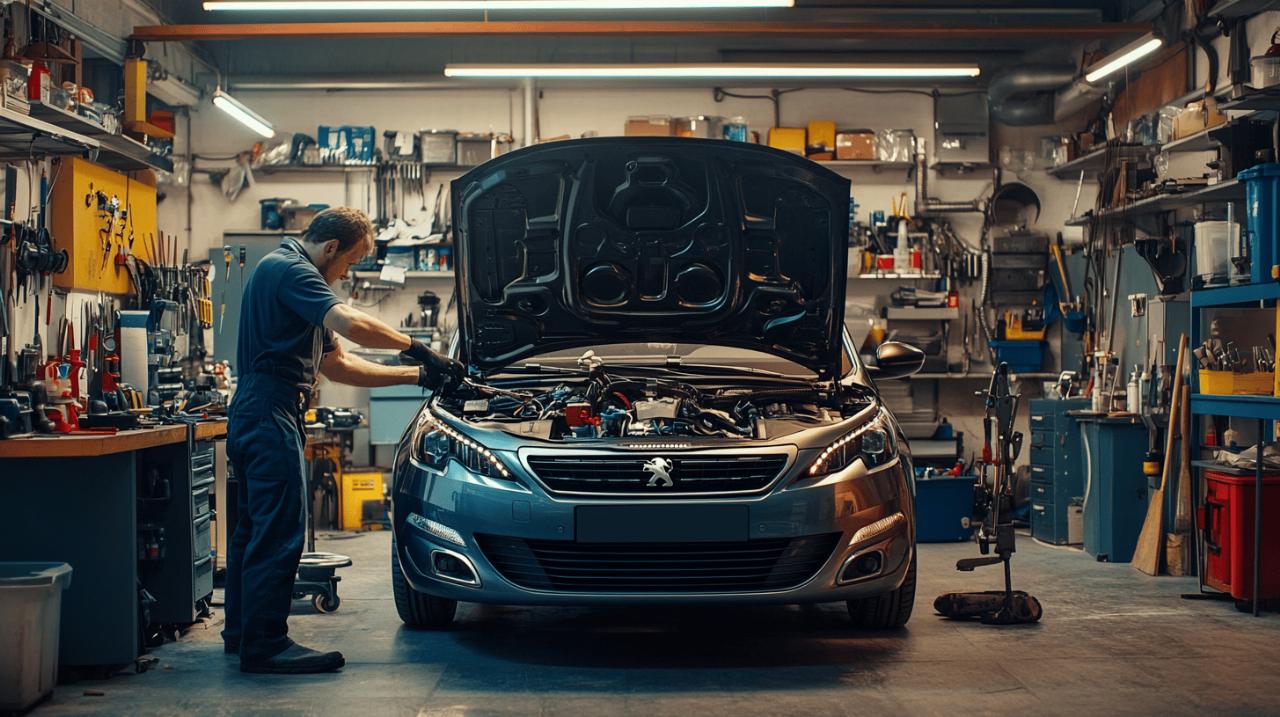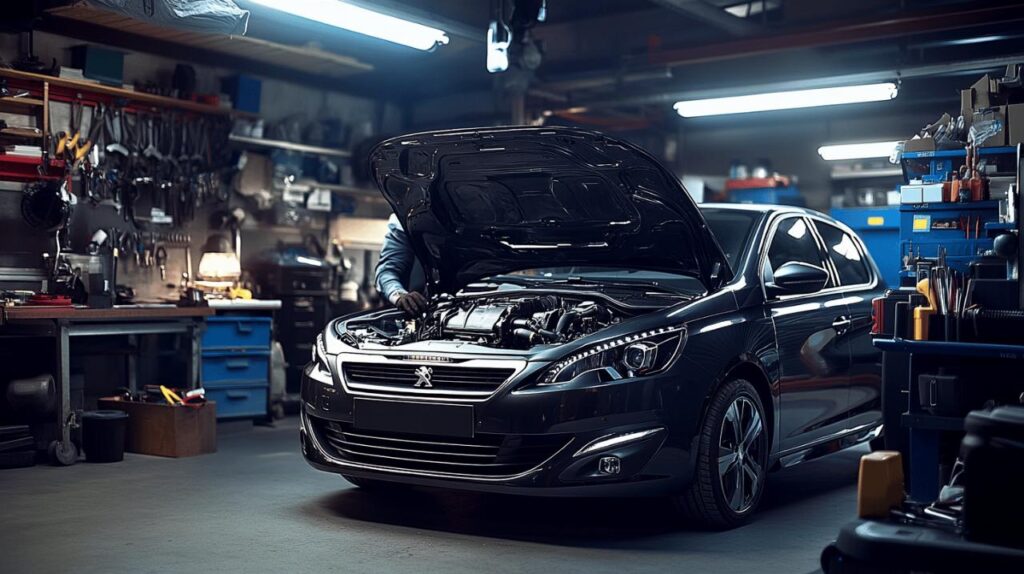Welcome to our comprehensive guide on maintaining the turbocharger in your Peugeot 307. This vital component significantly enhances your vehicle’s performance, but requires specific care to ensure longevity and avoid costly repairs. With proper maintenance, you can extend the life of your turbo system and enjoy optimal performance from your 307 for years to come.
Understanding your peugeot 307’s turbocharger system
The Peugeot 307, manufactured from 2001 to 2008, came with various engine options including turbocharged variants. These engines offered impressive power outputs ranging from 70bhp in standard models to 177bhp in higher-performance versions. Auto H Aus Europa specifications indicate that turbocharged models deliver significant performance advantages while maintaining reasonable fuel efficiency when properly maintained.
How Turbochargers Function in the Peugeot 307
Turbochargers in the 307 operate by harnessing exhaust gases to spin a turbine that forces additional air into the combustion chambers. This process increases oxygen availability during combustion, resulting in more power from each engine cycle. The system relies on precise tolerances and proper lubrication to function effectively, making regular maintenance essential for preserving performance and preventing premature wear.
Common Turbocharger Issues in the 307 Model
Several issues can affect turbochargers in the Peugeot 307. Oil contamination often leads to bearing wear, while carbon deposits can restrict the movement of the variable vane mechanism in diesel variants. Boost leaks from degraded hoses or loose clamps are also frequent concerns. The intercooler system may develop leaks over time, reducing efficiency and causing noticeable power loss during acceleration.
Regular maintenance practices for turbo longevity
Following service intervals is crucial for turbocharger health. For petrol 307 models, service is recommended every 20,000 miles or 2 years, while direct injection diesel variants require attention every 12,000 miles or 2 years. Interim services should occur every 10,000 miles for petrol and 6,000 miles for diesel engines, with regular oil checks every 2,000 to 3,000 miles being particularly important for turbo health.
Proper oil management and selection
Using the correct engine oil is critical for turbocharger longevity. The Peugeot 307 typically requires 5W-30 or 5W-40 grade oil, with capacity ranging from 3.25 to 5 litres depending on the specific engine. Turbochargers operate at extremely high temperatures and speeds, making high-quality oil essential for proper lubrication. Never ignore oil change intervals, as degraded oil loses its protective properties and can accelerate turbo wear through inadequate lubrication and carbon buildup.
Cooling System Care and Its Impact on Turbo Health
The cooling system plays a vital role in turbocharger health. Turbos generate significant heat during operation, and proper cooling prevents oil coking inside the unit. Regularly check coolant levels and condition, ensure the cooling fans function correctly, and address any overheating issues promptly. A well-maintained cooling system helps prevent thermal stress on turbocharger components, extending their service life considerably.
Warning signs of turbocharger problems
Identifying turbocharger issues early can save substantial repair costs. The Peugeot 307’s warning lights may not specifically indicate turbo problems, but performance changes often signal developing issues. Pay attention to power delivery, unusual sounds, and changes in fuel consumption which could indicate turbocharger wear or damage.
Identifying unusual noises and performance changes
Listen for whistling, whining, or rattling noises that may indicate bearing wear or impeller damage. Reduced acceleration, sluggish throttle response, or excessive exhaust smoke can signify turbocharger problems. Blue smoke suggests oil is entering the combustion chamber through worn turbo seals, while black smoke may indicate fuel mixture issues caused by incorrect boost pressure. Hesitation during acceleration often points to problems with the wastegate or boost control system.
Spotting oil leaks and seal failures
Regular visual inspections can reveal early signs of turbocharger seal failure. Check for oil around turbo connections, intercooler pipes, and air intake components. Oil in the intercooler or intake tract strongly suggests failing turbo seals. Monitor oil consumption between changes, as increased consumption without visible leaks may indicate oil is being drawn through worn turbo seals into the intake system and subsequently burned in the combustion chambers.
Diy turbocharger inspection techniques
While comprehensive turbocharger overhaul requires specialist equipment, several inspection procedures can be performed at home to monitor turbo health. Regular checks help identify potential issues before they cause significant damage or complete failure of the unit.
Visual checks you can perform at home
Examine the air intake system for oil residue, which may indicate seal problems. Check the turbo housing for cracks or heat damage, and inspect all connected hoses and clamps for security and condition. With the engine cool, check for excessive play in the turbo shaft by gently trying to move the compressor wheel side to side. Movement should be minimal; excessive play suggests bearing wear. Inspect the wastegate actuator for proper operation and security of its linkages.
When to seek professional assessment
Some symptoms warrant immediate professional attention. If you experience sudden power loss, hear loud unusual noises from the engine bay, notice excessive smoke, or detect metallic particles in the oil, consult a specialist. Modern turbocharger systems in the Peugeot 307 involve complex electronic controls and precise calibration, requiring diagnostic equipment beyond most home mechanics’ capabilities. Professional assessment becomes necessary when problems persist despite basic maintenance or when symptoms suggest internal turbocharger damage.
Preventative measures to extend turbo lifespan
Prevention remains the most cost-effective approach to turbocharger maintenance. Adopting certain habits and following recommended service schedules can significantly extend turbo life and maintain performance of your Peugeot 307.
Proper driving habits for turbo protection
Allow your engine to warm up before demanding full power, especially in cold weather. This ensures oil reaches proper operating temperature and viscosity for effective turbo lubrication. After high-speed or heavy-load driving, idle the engine for 30-60 seconds before switching off. This cooling period allows the turbocharger to slow down while oil continues circulating, preventing oil coking in the bearings. Avoid lugging the engine in high gears at low RPM, as this creates unnecessary strain on the turbocharger.
Scheduled maintenance timeline for peugeot 307 turbos
Beyond regular service intervals, specific attention to turbocharger-related systems helps prevent problems. Replace air filters according to the schedule in your owner’s manual, typically every 30,000 miles or sooner in dusty conditions. Inspect intercooler and associated pipework annually for leaks or damage. Change fuel filters as recommended to prevent contaminants from affecting fuel delivery and combustion quality. Consider a professional inspection of the turbocharger system at higher mileages, typically around 60,000-80,000 miles, even if no symptoms are present.



